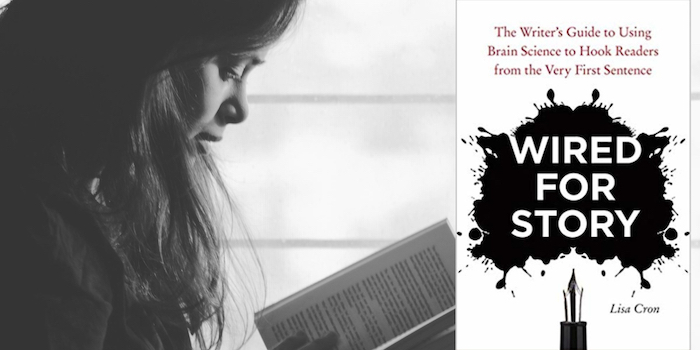 Short Version
Short Version
A story proves itself not on the paper but in the reader’s brain. In Wired for Story: The Writer’s Guide to Using Brain Science to Hook Readers from the Very First Sentence, Lisa Cron offers valuable insights and practical advice for crafting better stories.
Long Version: 3 Things I Love about This book (As a Nonfiction Author)
Wired for Story was published in 2012. I’ve avoided reading it until now because I’m a nonfiction writer and this book clearly focuses on fiction. But it kept popping up on my radar because of its “brain science” angle. I finally gave succumbed to curiosity and got the book. I’m glad I did. Here are three reasons why.
The Cognitive Science Angle on Reading
Lisa Cron shares my fascination with the cognitive science behind reading and writing. This book is well researched. Cron sites numerous studies without sounding dry or geeky, always in service of helping you write compelling fiction.
Her basic premise can be summed up in this quote:
“For a story to captivate a reader, it must continually meet hardwired expectations.”
Effective fiction writing isn’t only about coming up with a clever plot and a protagonist you can connect with; it’s about delivering that underlying story in a way that keeps the reader hooked and the dopamine firing.
Demystifying Story
When someone starts talking about exposition, inciting incidents and falling action, I get nervous. (Remember, I’m a nonfiction writer.)
Cron demystifies the concept of story structure, distinguishing the “plot” from the other story elements, like the protagonist and the story’s theme. The story, ultimately, is about how the protagonist overcomes the plot obstacles keeping them from their objectives.
Here’s a helpful quote from the book: “Plot is not synonymous with story. Plot facilitates story by forcing the protagonist to confront and deal with the issue that keeps him from achieving his goal.”
Better Insight Into Fiction
Cron would say that in a good story, the protagonist changes by the end. If I’m the protagonist of this story, then here’s my transformation: reading this book has shifted the way I read fiction.
Now I sometimes deconstruct the elements of story in the fiction I read. I notice how the plot, as it unfolds, is messing with the character’s obvious objectives, and how it forces them to face internal issues. When a book falls flat on the page, I have a better idea of why that is so.
Reading fiction is even more fun with this extra layer of insight.
Not for Fiction Writers Only
Even if you, like me, are not trying to write the next great American novel or screenplay, I have news for you: story matters.
Story may be the most effective method available for explaining complicated topics or changing people’s opinions. My latest book Writing to Be Understood includes a chapter on using story.
While nonfiction writers may not worry about the plotting details that bedevil fiction writers, we do need to understand how to wield the essential elements of story. Even if you write customer stories for a business or personal anecdotes in a blog, the insights in Wired for Story will make your writing more effective.
Other Book Reviews You Might Like:
The Business of Being a Writer by Jane Friedman
